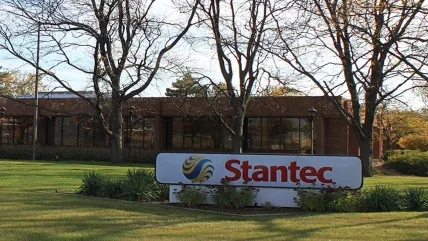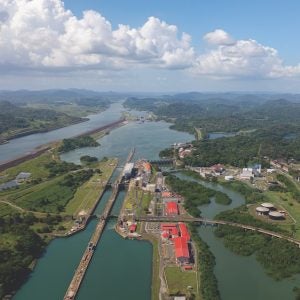
Francisco Tesi is the Business Practice Leader for Energy at Stantec and has been working in hydropower design and construction supervision across the globe for 17 years. For the last three years, he has been acting as Stantec’s project coordinator for Diamer Basha Dam and Mohmand Dam in Pakistan, and previously as the technical design leader for the 969 MW Neelum Jhelum Hydropower Project, and the technical structural lead for the Panama Canal Third Set of Locks project.
“As such, I’m very passionate about our industry. Hydropower plays a crucial role in our fight against climate change,” he says. “The most fulfilling aspect of my work is sitting next to local colleagues and their communities throughout the execution of challenging projects and being part of the change for a cleaner and sustainable future.
“It’s important that those outside our industry understand that both conventional hydropower and pumped storage hydropower provide power support and grid stability through massive quantities of low-carbon electricity.
“Hydropower plays a key role in the transition to clean energy for its ability to generate energy and its unmatched capabilities for providing flexibility and storage. Pumped storage hydropower is the most cost-competitive, large-scale, efficient, and sustainable energy storage solution. Over 93% of the current storage capability in the US comes from water storage, totalling 22.9GW. Its storage capacity is 100 times higher than any other available battery solution.
Hydropower projects have long lifetimes, and it has been proven in past decades that the investments we make today in hydropower and pumped storage provide renewable power and grid stability services for generations to come.”
Commissioned in 2018, the 969MW Neelum–Jhelum Hydropower Plant was part of a run-of-river hydroelectric power scheme in Azad Jammu and Kashmir, designed to divert water from the Neelum River to a power station on the Jhelum River. Construction on the project began in 2008 and includes a 135m long, 47m high concrete gravity diversion dam on the Neelum River at Nauseri, with a gross head of 420m and a reservoir of 8million m3.
Stantec led a joint venture to provide detailed design and construction supervision, including review of tender-level design, preparation of construction drawings, and construction management services.
The Neelum-Jhelum Project is one of the major projects planned by the government of Pakistan to enhance its hydropower development to meet the country’s growing energy needs. The project enhances the sustainable development of water and energy resources in Pakistan, including flood control, irrigation, and energy generation and transmission. The social-economic benefits to the local population can only be partly captured through the 4500 new jobs created during construction. Still, the list includes new roads, colonies, bridges, water treatment plants, etc. This project not only marked a significant milestone for Pakistan’s energy sector but also helped establish the foundation for a new era of hydroelectric mega-projects expected in the next decade.
In Ethiopia, the 254MW Genale Dawa III (GD-3) hydropower project provides essential renewable energy and is owned and operated by Ethiopian Electrical Power (EEP). Stantec provided contract management consultancy services for the engineering, procurement, and construction. It also helped with the transfer of knowledge and training.
The GD-3 project will increase the overall power capacity in Ethiopia by nearly 6% to 4514MW, contributing to the government’s ambitious goal of increasing nationwide capacity to 12,000MW by 2025. Ethiopia recently unveiled a ten-year energy roadmap that aims to increase energy generation four-fold using not only hydro but various other energy sources such as geothermal, wind, co-generation and solar power.
The 110m high, 456m long concrete-faced rockfill dam creates a reservoir volume of 3.2million m3. The spillway is an open chute type with an ogee weir crest and three radial spillway gates. Three vertical Francis turbine generators, each having a generating capacity of 84.7 MW, are housed in an underground cavern, with the main unit transformers housed in an adjacent cavern.
GD-3 is a multi-purpose dam which can be used for irrigation and also serves as a water storage facility for use during water scarcity in addition to power generation.






